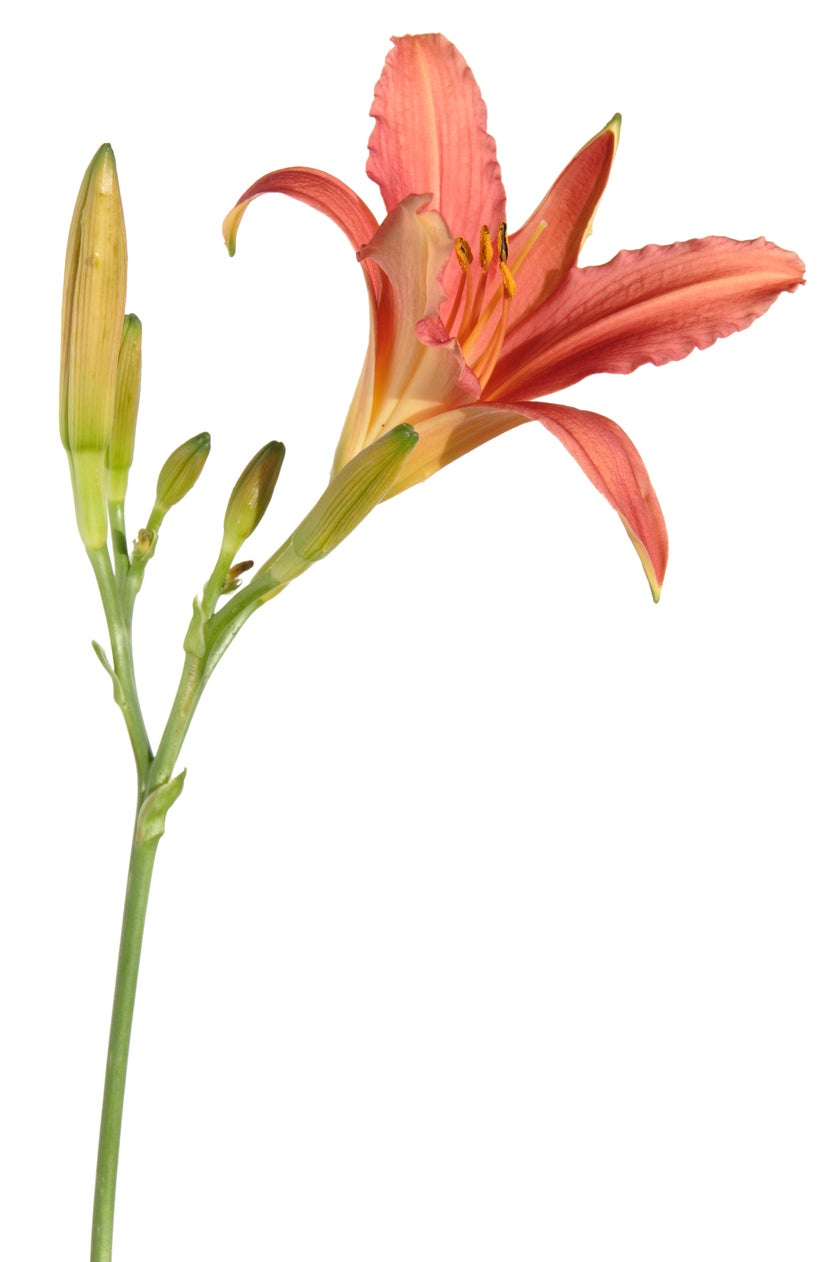Daylily Scape Info: Learn About Daylily Scape Identification


There is so much to love about the daylily, one of the most prolific and dependable perennial plants in the garden. Drought tolerant and relatively pest free, daylilies require little maintenance other than pulling out the scape at the correct time. What is a daylily scape? Scapes in daylilies are the plants’ leafless stems on which the flowers appear. For more daylily scape information, read on.
What is a Daylily Scape?
If you don’t know about scapes on daylilies, you aren’t alone. Many refer to the scapes on daylilies as stems or stalks. So exactly what is a daylily scape? Daylily scape identification is not difficult. Every year the plant grows long stems, called scapes. They produce the flowers then die back.
These daylily flower scapes do not have any true leaves, only bracts. Scapes on daylilies include the entire flower stalk above the crown. The crown is the point where roots and stalk meet.
Daylily Scape Information
Once you understand daylily scape identification, the scapes are easy to locate. They shoot up every year in springtime, ranging in height from 8 inches (20 cm.) to 5 feet (1.5 m.).
The scape is not considered an ornamental feature of daylilies. The plants are cultivated for their blossoms that grow in many shades, sizes, and shapes. However, the flowers would not be able to bloom without the scapes that raise them above the clump of daylily foliage. In fact, though rarely afflicted with issues, scape blast in daylilies is a common problem seen in the garden.
Cutting Daylily Flower Scapes
Each daylily flower scape can hold many flower pods, but the time comes every year when all the pods on a scape have bloomed and died.
That leaves a gardener with a choice. Should you cut the bare scape immediately or wait until it turns brown and then tug it away from the crown? The prevailing wisdom suggests that the latter is better for the plant.
Sign up for the Gardening Know How newsletter today and receive a free copy of our e-book "How to Grow Delicious Tomatoes".
If you cut down a standing scape, the empty stem may gather moisture and attract (or even house) insects that can descend into the crown. The best daylily scape information tells you to wait until the scape is brown and separates easily from the crown when tugged.

Teo Spengler is a master gardener and a docent at the San Francisco Botanical Garden, where she hosts public tours. She has studied horticulture and written about nature, trees, plants, and gardening for more than two decades, following a career as an attorney and legal writer. Her extended family includes some 30 houseplants and hundreds of outdoor plants, including 250 trees, which are her main passion. Spengler currently splits her life between San Francisco and the French Basque Country, though she was raised in Alaska, giving her experience of gardening in a range of climates.